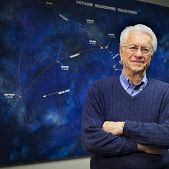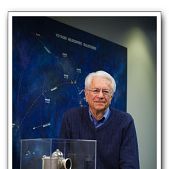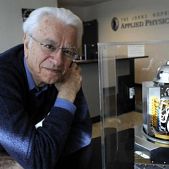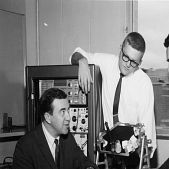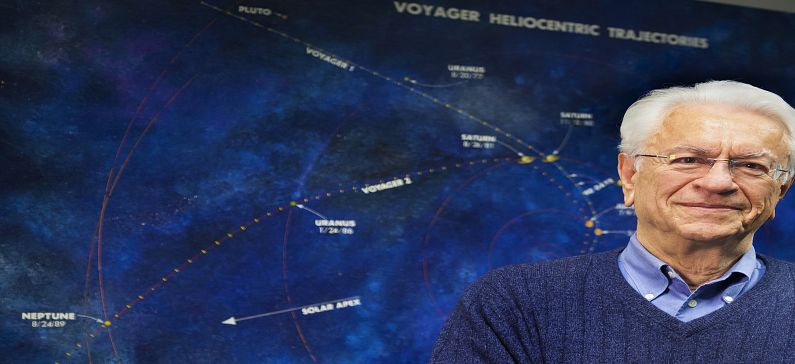
Tom Krimigis earns top honor from International Academy of Astronautics
The International Academy of Astronautics (IAA) has presented its premier honor — the von Karman Award — to Tom Krimigis, eminent space scientist and head emeritus of the Johns Hopkins University Applied Physics Laboratory (APL) in Laurel, Maryland.
Named for aerodynamics pioneer Theodore von Karman, founder and first president of the IAA, the annual award recognizes outstanding lifetime scientific achievement. In presenting the award on Sept. 24 during its annual Academy Day celebration in Adelaide, Australia, the IAA cited Krimigis for his leadership and scholarship in the space sciences and astronautics, including his discovery and promotion of the physics of energetic particles throughout the solar system and into near-interstellar space; his development of scientific instruments to explore the environments where those particles exist; and his articulation and application of policy-shifting paradigms in robotic space exploration that led to fundamental advances across astronautics.
Krimigis is the only scientist in the world to lead or participate in space physics experiments on all nine classical planets. He has served as a principal investigator on five NASA missions — including the legendary Voyagers and the Cassini Saturn orbiter — and as a co-investigator on many others.
Krimigis has designed, built, flown and analyzed data from 23 instruments on various NASA and European Space Agency missions. His Low-Energy Charged Particle instrument flies aboard both Voyager spacecraft; on Voyager 1, LECP data was essential to determining that a spacecraft had left the solar system for the first time. Krimigis was also instrumental in establishing NASA’s groundbreaking Discovery Program of low-cost planetary missions, as well as the New Frontiers Program, for which the APL-built New Horizons to Pluto was the first mission. He is also a co-investigator on Parker Solar Probe, set to launch in summer 2018.
A native of Chios, Greece, Krimigis earned a bachelor’s degree in physics from the University of Minnesota and a master’s and doctorate in physics from the University of Iowa, studying under James Van Allen, the former APL scientist who discovered Earth’s radiation belts. He served on the faculty of the Physics and Astronomy Department at Iowa — where he pioneered the application of solid state detectors to the measurements of energetic particles in space — before joining APL in 1968. He headed the Space Physics and Instrumentation Group, became chief scientist in 1980 and became head of the Space Department in 1991.

